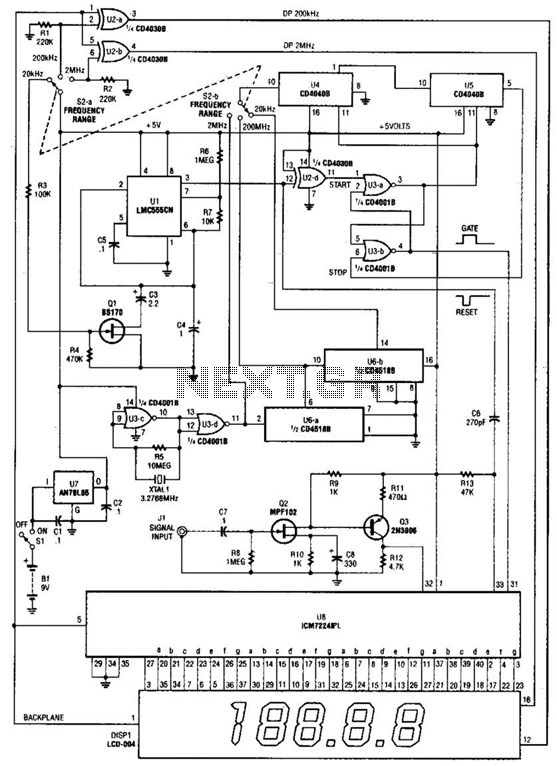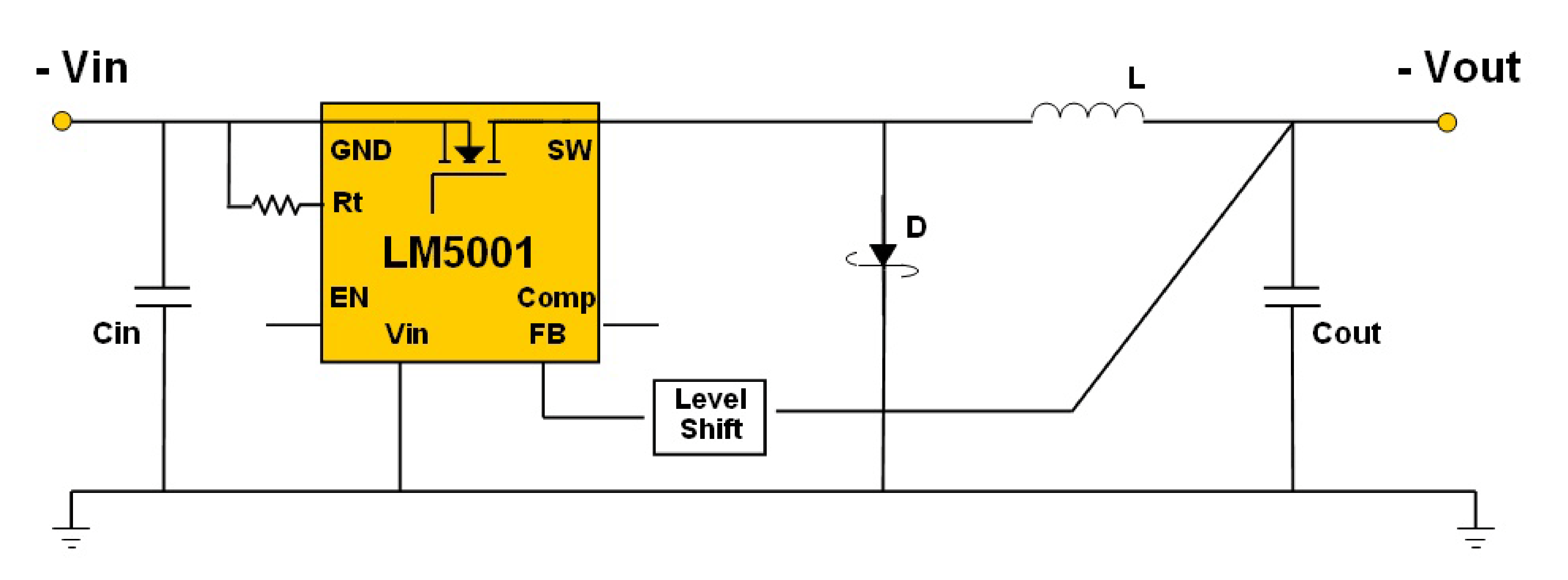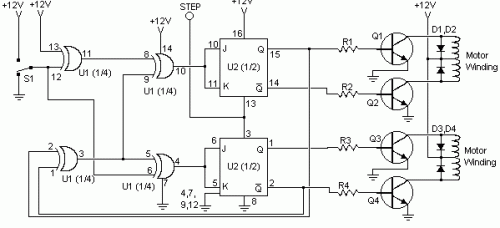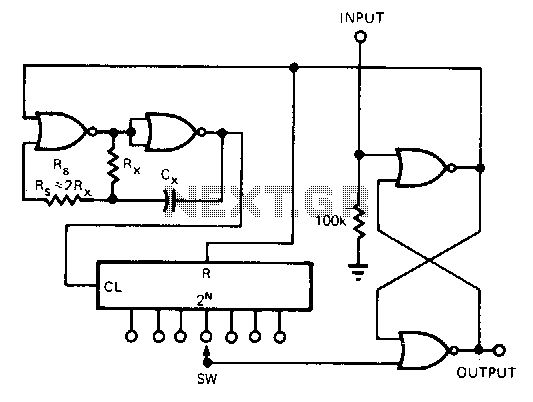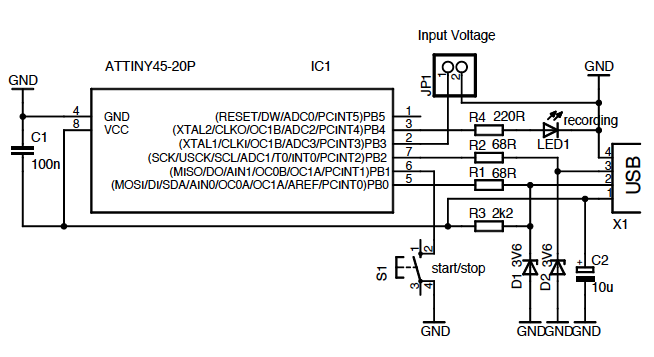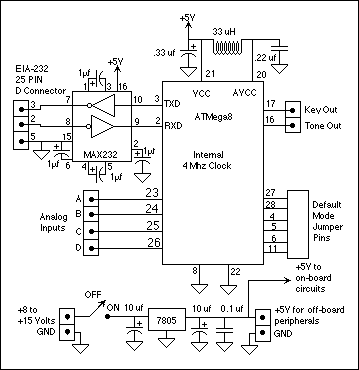
how to build digital step km counter
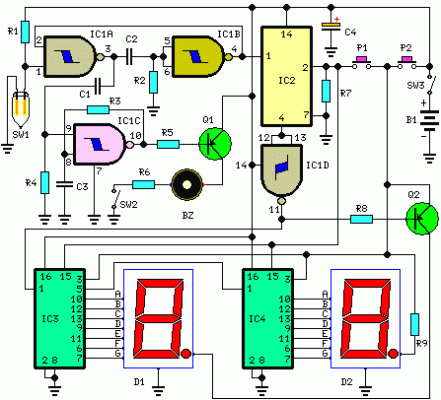
This circuit measures the distance covered during a walk. The hardware is housed in a small box that fits into a pocket, and the display operates as follows: the leftmost display, D2 (the most significant digit), shows distances from 0 to 9 kilometers, with its dot always illuminated to differentiate kilometers from hectometers. The rightmost display, D1 (the least significant digit), indicates hundreds of meters and its dot lights up after every 50 meters of walking. A beeper, which can be disabled, signals each unit count, occurring every two steps. A standard step is approximated to be around 78 centimeters, meaning the LED indicating 50 meters lights up after 64 steps (or 32 activations of the mercury switch). The display shows 100 meters after 128 steps, and so forth. To conserve battery, the display only illuminates upon request by pressing P2. Accidental resets of the counters are prevented, as both pushbuttons must be pressed simultaneously to reset the circuit. While this device is not a precision meter, its accuracy is deemed acceptable for its intended purpose. The proper placement of the mercury switch within the box and its angle is crucial. IC1A and IC1B form a monostable multivibrator that mitigates excessive bouncing from the mercury switch, resulting in a clean square pulse entering IC2, which divides the signal by 64. Q2 drives the LED dot segment of D1 for every 32 pulses counted by IC2. IC3 and IC4 divide the signal by 10 to drive the displays. P1 resets the counters, while P2 activates the displays. IC1C generates an audio frequency square wave that is briefly enabled at each monostable count, with Q1 driving the piezo sounder and SW2 providing a means to disable the beep. This circuit is primarily designed for walking, and for jogging, careful placement of the mercury switch is essential to avoid erroneous counts.
This circuit serves as a distance measuring device specifically designed for walking activities. The compact hardware is conveniently stored in a pocket-sized enclosure, facilitating ease of use during walks. The dual display system provides a clear and intuitive readout of distance covered, with D2 indicating kilometers and D1 showing the finer resolution of hundreds of meters. The consistent illumination of the dot on D2 aids in distinguishing between kilometers and hectometers, enhancing user comprehension.
The beeper feature, which can be turned off, offers auditory feedback for every two steps taken, thus allowing users to track their progress without needing to constantly check the display. The choice of a standard step length of approximately 78 centimeters provides a practical basis for distance calculations, with the system designed to trigger the LED indicator after every 64 steps, aligning with the measurement of 50 meters. This design choice emphasizes user engagement and feedback, making the device suitable for casual walkers.
Power management is effectively addressed by requiring user interaction to activate the display, thereby prolonging battery life. The dual button reset mechanism adds a layer of operational safety, preventing accidental resets that could disrupt the tracking process. Although the device does not offer high precision, the accuracy is sufficient for casual use, making it a practical tool for fitness enthusiasts.
The circuit's functionality is enhanced by the implementation of IC1A and IC1B, which stabilize the signal from the mercury switch, ensuring reliable performance by reducing noise from switch bouncing. The subsequent division of the signal by IC2 and the driving of the displays by IC3 and IC4 ensure that the user receives accurate and timely updates on their walking distance.
The audio feedback generated by IC1C adds an additional layer of user interaction, while the option to disable the sound via SW2 provides flexibility for users in different environments. Overall, this circuit exemplifies a well-thought-out design that balances functionality, usability, and power efficiency, making it a valuable tool for individuals looking to monitor their walking distances effectively.This circuit measures the distance covered during a walk. Hardware is located in a small box slipped in pants` pocket and the display is conceived in the following manner: the leftmost display D2 (the most significant digit) shows 0 to 9 Km. and its dot is always on to separate Km. from hm. The rightmost display D1 (the least significant digit) sh ows hundreds meters and its dot illuminates after every 50 meters of walking. A beeper (excludable), signals each count unit, occurring every two steps. A normal step was calculated to span around 78 centimeters, thus the LED signaling 50 meters illuminates after 64 steps (or 32 operations of the mercury switch), the display indicates 100 meters after 128 steps and so on. For low battery consumption the display illuminates only on request, pushing on P2. Accidental reset of the counters is avoided because to reset the circuit both pushbuttons must be operated together.
Obviously, this is not a precision meter, but its approximation degree was found good for this kind of device. In any case, the most critical thing to do is the correct placement of the mercury switch inside of the box and the setting of its sloping degree.
IC 1A & IC 1B form a monostable multi vibrator providing some degree of freedom from excessive bouncing of the mercury switch. Therefore a clean square pulse enters IC2 that divides by 64. Q2 drives the LED dot-segment of D1 every 32 pulses counted by IC2. Either IC3 & IC4 divide by 10 and drive the displays. P1 resets the counters and P2 enables the displays. IC1C generates an audio frequency square wave that is enabled for a short time at each monostable count.
Q1 drives the piezo sounder and SW2 allows disabling the beep. This circuit is primarily intended for walking purposes. For jogging, further great care must be used with mercury switch placement to avoid undesired counts. 🔗 External reference
This circuit serves as a distance measuring device specifically designed for walking activities. The compact hardware is conveniently stored in a pocket-sized enclosure, facilitating ease of use during walks. The dual display system provides a clear and intuitive readout of distance covered, with D2 indicating kilometers and D1 showing the finer resolution of hundreds of meters. The consistent illumination of the dot on D2 aids in distinguishing between kilometers and hectometers, enhancing user comprehension.
The beeper feature, which can be turned off, offers auditory feedback for every two steps taken, thus allowing users to track their progress without needing to constantly check the display. The choice of a standard step length of approximately 78 centimeters provides a practical basis for distance calculations, with the system designed to trigger the LED indicator after every 64 steps, aligning with the measurement of 50 meters. This design choice emphasizes user engagement and feedback, making the device suitable for casual walkers.
Power management is effectively addressed by requiring user interaction to activate the display, thereby prolonging battery life. The dual button reset mechanism adds a layer of operational safety, preventing accidental resets that could disrupt the tracking process. Although the device does not offer high precision, the accuracy is sufficient for casual use, making it a practical tool for fitness enthusiasts.
The circuit's functionality is enhanced by the implementation of IC1A and IC1B, which stabilize the signal from the mercury switch, ensuring reliable performance by reducing noise from switch bouncing. The subsequent division of the signal by IC2 and the driving of the displays by IC3 and IC4 ensure that the user receives accurate and timely updates on their walking distance.
The audio feedback generated by IC1C adds an additional layer of user interaction, while the option to disable the sound via SW2 provides flexibility for users in different environments. Overall, this circuit exemplifies a well-thought-out design that balances functionality, usability, and power efficiency, making it a valuable tool for individuals looking to monitor their walking distances effectively.This circuit measures the distance covered during a walk. Hardware is located in a small box slipped in pants` pocket and the display is conceived in the following manner: the leftmost display D2 (the most significant digit) shows 0 to 9 Km. and its dot is always on to separate Km. from hm. The rightmost display D1 (the least significant digit) sh ows hundreds meters and its dot illuminates after every 50 meters of walking. A beeper (excludable), signals each count unit, occurring every two steps. A normal step was calculated to span around 78 centimeters, thus the LED signaling 50 meters illuminates after 64 steps (or 32 operations of the mercury switch), the display indicates 100 meters after 128 steps and so on. For low battery consumption the display illuminates only on request, pushing on P2. Accidental reset of the counters is avoided because to reset the circuit both pushbuttons must be operated together.
Obviously, this is not a precision meter, but its approximation degree was found good for this kind of device. In any case, the most critical thing to do is the correct placement of the mercury switch inside of the box and the setting of its sloping degree.
IC 1A & IC 1B form a monostable multi vibrator providing some degree of freedom from excessive bouncing of the mercury switch. Therefore a clean square pulse enters IC2 that divides by 64. Q2 drives the LED dot-segment of D1 every 32 pulses counted by IC2. Either IC3 & IC4 divide by 10 and drive the displays. P1 resets the counters and P2 enables the displays. IC1C generates an audio frequency square wave that is enabled for a short time at each monostable count.
Q1 drives the piezo sounder and SW2 allows disabling the beep. This circuit is primarily intended for walking purposes. For jogging, further great care must be used with mercury switch placement to avoid undesired counts. 🔗 External reference
